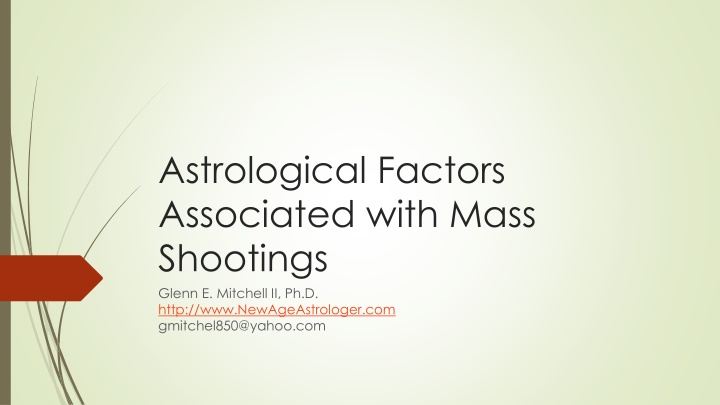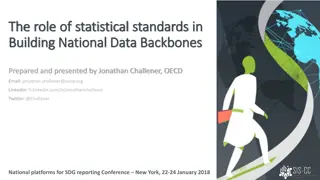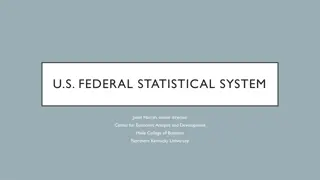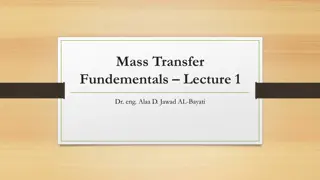Astrological Factors in Mass Shootings: Exploring Statistical Significance
Mass Shooting Events (MSEs) are a growing concern, with this research focusing on determining astrological factors associated with such events. The study urges caution against atheoretical research approaches and emphasizes the need for a theoretical relationship between astrological factors and MSEs to demonstrate causation. An example is given where the positioning of the Sun in houses VII through XII during MSEs correlates with locations such as work, school, and churches where incidents commonly occur.
Download Presentation

Please find below an Image/Link to download the presentation.
The content on the website is provided AS IS for your information and personal use only. It may not be sold, licensed, or shared on other websites without obtaining consent from the author.If you encounter any issues during the download, it is possible that the publisher has removed the file from their server.
You are allowed to download the files provided on this website for personal or commercial use, subject to the condition that they are used lawfully. All files are the property of their respective owners.
The content on the website is provided AS IS for your information and personal use only. It may not be sold, licensed, or shared on other websites without obtaining consent from the author.
E N D
Presentation Transcript
Astrological Factors Associated with Mass Shootings Glenn E. Mitchell II, Ph.D. http://www.NewAgeAstrologer.com gmitchel850@yahoo.com
Mass Shooting Events Mass Shooting Events (MSEs) have been a common phenomenon in recent U.S. history. Not only are MSEs becoming more frequent, they are becoming increasingly deadly as the recent mass shooting in Las Vegas demonstrates. This exploratory research attempts to determine astrological factors highly associated with MSEs.
The Perils of Atheoretical Research One common approach to Exploratory Data Analysis (EDA) is to take a shotgun approach and literally try thousands of astrological factors to determine which are statistically significant and then report. This is not the approach taken in this study. The problem with the shotgun approach to EDA is that lots and lots of astrological factors will appear to be statistically significant by random chance alone. Let s assume that we examine 1,000 astrological measures and we use the scientific norm of a 0.95 level of statistical significance. That means, we can expect 50 of those astrological measures to falsely be associated with MSEs just by random chance alone.
The Perils of Atheoretical Research A long-standing problem with statistical research in astrology is its general atheoretical nature. Correlations and other measures of association like chi-square statistics are frequently interpreted as demonstrating causation. Correlation is one of the requirements to prove causation We statisticians like to say, correlation is a necessary condition to prove causation. Correlation is not the only requirement for proving causation Here, we say, correlation is not a sufficient condition to prove causation. Time sequence is critical to demonstrate causation. If A causes B, then A needs to change before B changes. We can meet this requirement with event data for MSEs under the assumption that the astrological factors in the event chart precede (perhaps almost simultaneously) the mass shootings themselves. We also require a theoretical relationship between the astrological factor(s) under consideration and MSEs. If we want to demonstrate causation, we need a story for why we expect A to affect B.
The Perils of Atheoretical Research A practical example. The Sun tends to appear in houses VII through XII for MSEs. Much more seldom in houses I through VI. The theoretical explanation is basic. Most MSEs occur at work, at school, and at churches. In other words, most MSEs occur during daylight. Not all. Most.
Literature Review Psychologists Joseph Vandello and Jennifer Bosson Coined the term "precarious manhood" to describe the theory that manhood is widely viewed as a status that is elusive (it must be earned) and tenuous (it must be demonstrated repeatedly through actions). Self-worth is tied to being perceived as a "real man." Wilson and Daly There are sound evolutionary reasons why younger men find themselves especially concerned with status and dominance. This includes the Young Male Syndrome, a tendency for some young men to engage in risky, aggressive behavior.
Data Mother Jones published an article in July 2012 with the title A Guide to Mass Shootings in America. That article contained some basic statistics on mass shootings in America. An update was published online in 2017 which included downloadable data (in various formats). Subsequent MSEs were appended to the Mother Jones data for this study by the author, making the data current through the end of 2017.
Operational Definition of MSEs The perpetrator took the lives of at least four people. This is consistent with the FBI definition of a mass shooting to distinguish them from serial killings. The killings were carried out by a lone perpetrator. Two exceptions were the killings at Columbine High School and Westside Middle School. The shootings occurred in a public place. Except for a party on private property in Crandon, Wisconsin and another in Seattle, Washington, where crowds of strangers had gathered. Perpetrators who died or were wounded during the attack were not included in victim counts. A handful of cases were spree killings. Cases where killings occurred in more than one location over a relatively short period of time.
Research Methods This study is a theory-guided EDA. The goal is to identify the major astrological factors associated with MSEs. The major bells. Two pieces of software were used. JigSaw from Esoteric Technologies was used to construct the random control group for the study. Analysis of the data was done with Alphee Lavoie s Fast Research program.
Research Methods Control Groups JigSaw was used to generate events for random times and places for every date between August 1982 and November 2017, the range of dates covered by the MSE data. The locations were constrained to the approximate longitudes and latitudes of the fifty United States. There were 13,235 control group charts generated for this study, constrained to the dates and approximate geographic area covered by MSEs. Event Charts Univariate analysis was undertaken with Alphee Lavoie s Fast Research app. There were 86 event charts.
Theoretical Underpinnings Two principles guided this first look at MSCs. First, the research had to be theoretically-driven. Second, only the really significant factors would be included. A set of theory-driven, astrological keywords related to MSEs was derived from Alfred Witte and Hermann Lefeldt s Rules for Planetary Pictures: The Astrology of Tomorrow. For example, mass shooters tend to be socially isolated individuals. There are keywords for Lonesome, Separation, and Shunned to capture dimensions of social isolation. In some cases, an aspect or midpoint falls under multiple, theoretically-relevant keywords.
Level of Significance A 99% level of probability for each measure was used. The level of probability to use is arbitrary. 95% is more conventional in scientific research. Even at 99%, the number of significant results was overwhelming. A 99% probability would focus in on astrological factors with measures of association so strong, they provide compelling evidence.
Trans-Neptunian Planets (TNPs) The so-called Uranian planets, also called Trans-Neptunian Planets (or TNPs) were used in this study. These eight planets remain hypothetical to this very day. Alfred Witte was a founder of the Hamburg School of astrology.He was summoned to the Russian front during WWI to forecast the moments of artillery bombardments. He failed with traditional astrology. He, thus began his own practical researches and discovered the first four TNPs. Friedrich Sieggr n, derived the locations of the other four TNPs. Witte used the TNPs to predict bombardments and scenes of mass carnage with success.
Trans-Neptunian Planets (TNPs) TNPs are used in this study for the same reason they were used by Witte and Sieggr n and by modern Uranian astrologers. For the practical reason, they work. The results from this study demonstrate that the fit between the data and model results improves markedly when TNPs are included in the analysis. When it comes to aspects, the focus was on aspects between any planet (and ASC, MC, North Node) with Mars, Saturn, Uranus, Neptune, Pluto, Cupido, Hades, Zeus, Chronos, Appollon, Admetos, or Poseidon. Midpoints likewise involve any planet (and ASC, MC, North Node) as a focal planet, with Mars, Saturn, Uranus, Neptune, Pluto, Cupido, Hades, Zeus, Chronos, Appollon, Admetos, or Poseidon midpoints.
Results A common idea is that nothing significant happens without the angles of the horoscope being involved. There's scant evidence for that point-of-view in the mass shooting data. The only planet approaching the required level of probability is Saturn (at 96.5% probability). The Sun seldom is involved with the angles in these cases (only 3 out of 86 instances). By random chance alone we would expect the Sun to be conjunct an angle a minimum of 7.1 times. There is an unmistakable generation effect to MSEs. The earliest MSE in this study occurred in 1982. The next two in 1984. One in 1986. Another in 1987. Etc. This contrasts with more recent years. We experienced ten MSEs in 2017. Six in 2016. Seven in 2015. Etc. An undeniable increase in the incidence of MSEs over the years.
Results As a consequence of the increasing numbers of MSEs in recent years, Pluto in Capricorn and Uranus in Aries were included as predictors. Pluto in Capricorn occurred in 48 of the MSEs. By random chance alone, the expectation would be 22.8 instances. The chi-square statistic was 28, a 100% probability. Uranus in Aries occurred in 41 of the MSEs, compared with an expectation of 16.3, a chi-square of 37.2, and a probability of 100%.
Results Parsimony is an important consideration in scientific research. It is the idea that a model should be no more complicated than is required to explain the phenomenon. This study applies the so-called Rule of 3. Donna Cunningham expressed this rule succinctly. This . . . old rule says that for an astrological interpretation to be true, you must be able to see it expressed three ways in the chart. If you see it once, it is only a possibility; if you see it twice, it becomes more likely; but if you can see the same theme a third time, that interpretation then becomes a probability. This study retains themes that appear at least three times as aspects or midpoint pictures.
Autocratic Chi2Prob. Mercury = Zeus 7.7 99.4% Mars + Kronos = Zeus 6.7 99.1 Pluto + Midheaven = Zeus 7.0 99.2
Compulsion Chi2Prob. Moon + Mercury = Zeus 14.6 100.0 Mercury + Poseidon = Vulcanus 7.0 99.2 Neptune + Kronos = North Node 8.6 99.7 Pluto + Zeus = Uranus 16.7 100.0 Zeus + Poseidon = Vulcanus 11.8 99.9
Death Chi2Prob. Mercury = Admetos 12.7 100.0 Moon + Admetos = Uranus 15.9 100.0 Uranus + Neptune = North Node 24.3 100.0 Uranus + Poseidon = Saturn 17.2 100.0
Deception Chi2Prob. Neptune = Apollon 16.1 100.0 Neptune = Vulcanus 13.3 100.0 Uranus + Vulcanus = North Node 12.1 100.0 Neptune + Poseidon = Kronos 9.1 99.7
Destruction Chi2Prob. Mars + Uranus = Hades 18.1 100.0 Jupiter + Admetos = Uranus 8.1 99.6 Hades + Zeus = North Node 31.2 100.0
Determination Chi2Prob. Moon = Admetos 7.6 99.4% Mercury = Admetos 12.7 100.0 Sun + Midheaven = Mars 8.9 99.7 Uranus + Midheaven = Zeus 11.0 100.0 Saturn + Pluto = Mars 6.7 99.1
Enraged Chi2Prob. Mercury + Midheaven = Uranus 23.9 100.0 Mercury + Poseidon = Mars 9.4 99.8 Admetos + Ascendant = Uranus 9.4 99.8
Evil Chi2Prob. Hades = Kronos 23.8 100.0 Hades + North Node = Apollon 7.0 99.2 Hades + Zeus = Mars 9.4 99.8 Hades + Kronos = Pluto 8.6 99.7
Excited Chi2Prob. Mercury + Midheaven = Uranus 23.9 100.0 Uranus + Ascendant = Midheaven 15.9 100.0 Uranus + Midheaven = Hades 15.9 100.0 Admetos + Ascendant = Uranus 9.4 99.8
Government Chi2Prob. Mars + Neptune = Kronos 13.0 100.0 Mars + Zeus = Ascendant 11.6 99.9 Pluto + Hades = Zeus 17.2 100.0
Haughtiness Chi2Prob. Ascendant + Midheaven = Kronos 15.5 100.0 Moon + Midheaven = Admetos 7.9 99.5 Mercury + Venus = Admetos 8.2 99.6 Zeus + North Node = Pluto 7.4 99.3
Hinderances Chi2 Prob. Sun + Vulcanus = Hades 7.9 99.5% Sun + Zeus = Hades 12.1 99.9 Saturn + Midheaven = Poseidon 7.4 99.3 Saturn + Pluto = Mars 6.7 99.1 Saturn + Pluto = Hades 11.1 99.9 Saturn + Zeus = Midheaven 10.4 99.9 Saturn + Zeus = Hades 26.7 100.0 Saturn + Admetos = Neptuine 16.1 100.0 Saturn + Vulcanus = North Node 28.3 100.0 Uranus + Vulcanus = Saturn 13.0 100.0 Neptune + Hades = Saturn 21.4 100.0 Zeus + Ascendant = Saturn 11.6 99.9 Kronos + Poseidon = Saturn 7.7 99.4
Lonesome Chi2Prob. Sun + Saturn = Zeus 7.4 99.3 Venus + Saturn = Ascendant 19.0 100.0 Uranus + Admetos = Cupido 22.0 100.0 Admetos + North Node = Cupido 6.8 99.1
Love and Lovability Chi2Prob. Sun + Venus = Admetos 10.8 99.9 Venus + North Node = Admetos 8.5 99.6 Venus + Vulcanus = Neptune 8.2 99.6
Mental Illness Chi2Prob. Sun + Uranus = Pluto 8.5 99.6 Moon + Mercury = Midheaven 9.7 99.8 Moon + Poseidon = Hades 12.2 100.0 Mars + Saturn = Poseidon 12.5 100.0
Murder Chi2Prob. Uranus = Admetos 6.5 99.0 Mercury + Hades = Mars 11.6 99.9 Mercury + Zeus = Hades 12.5 100.0 Mars + Uranus = Hades 18.1 100.0 Mars + Hades = Vulcanus 6.8 99.1 Uranus + Midheaven = Hades 15.9 100.0
Poverty Chi2Prob. Jupiter + Hades = Saturn 9.7 99.8% Saturn + Pluto = Hades 11.1 99.9 Saturn + Hades = Admetos 13.5 100.0 Saturn + Zeus = Hades 26.7 100.0 Neptune + Vulcanus = Hades 20.8 100.0 Hades + North Node = Cupido 10.5 99.9 Hades + Admetos = North Node 11.6 99.9 Pluto + Cupido = Hades 16.4 100.0 Apollon + Vulcanus = Neptune 34.5 100.0
Separation Chi2 Prob. Mars = Saturn 7.0 99.2 Uranus = Admetos 6.5 99.0 Sun + Ascendant = Admetos 6.8 99.1 Sun + Saturn = Zeus 7.4 99.3 Sun + Admetos = Ascendant 8.5 99.6 Moon + Mars = Saturn 7.4 99.3 Venus + Mars = Neptune 7.0 99.2 Venus + Neptune = North Node 7.0 99.2 Mars + North Node = Saturn 20.4 100.0 Jupiter + Ascendant = Saturn 16.6 100.0 Jupiter + North Node = Neptune 8.1 99.6 Jupiter + Cupido = Admetos 7.7 99.4 Saturn + Ascendant = Zeus 7.0 99.2 Saturn + Cupido = Mars 9.4 99.8
Separation Chi2 Prob. Saturn + Cupido = Apollon 8.5 99.6 Saturn + Apollon = North Node 8.1 99.6 Uranus + North Node = Saturn 10.8 99.9 Neptune + North Node = Mars 6.8 99.1 Neptune + North Node = Admetos 8.0 99.5 Neptune + Cupido = North Node 9.4 99.8 Neptune + Cupido = Apollon 9.1 99.7 Cupido + Admetos = Ascendant 8.6 99.7 Cupido + Admetos = Saturn 8.9 99.7 Cupido + Admetos = Vulcanus 6.6 99.0 Admetos + North Node = Midheaven 7.0 99.2% Admetos + North Node = Cupido 6.8 99.1 Vulcanus + North Node = Neptune 7.7 99.4
Shunned Chi2Prob. Venus + Saturn = Ascendant 19.0 100.0 Jupiter + Ascendant = Saturn 16.6 100.0 Uranus + Admetos = Cupido 22.0 100.0 Cupido + Admetos = Saturn 8.9 99.7
Tension Chi2Prob. Uranus = Vulcanus 46.9 100.0 Moon + Uranus = Ascendant 23.9 100.0 Uranus + Vulcanus = Apollon 14.7 100.0
Transformation Chi2Prob. Saturn + Admetos = Uranus 18.9 100.0 Neptune + Admetos = Uranus 18.9 100.0 Pluto + Kronos = Admetos 18.7 100.0 Pluto + Apollon = Uranus 18.3 100.0 Pluto + Vulcanus = Uranus 8.2 99.6 Pluto + Poseidon = Vulcanus 21.8 100.0 Vulcanus + Midheaven = Pluto 17.3 100.0
Victim Chi2Prob. Mars + Vulcanus = North Node 13.0 100.0 Jupiter + Hades = Poseidon 8.8 99.7 Saturn + Poseidon = Hades 7.0 99.2
Face Validity There is ample evidence of strong associations between astrological factors and MSEs. The categories have what statisticians refer to as face validity. This means, that a reasonable observer would conclude that these categories tap into important motivations why some individuals engage in mass shootings. It was previously mentioned, for example, that MSE perpetrators tend to be socially isolated. We see confirmatory evidence under keywords for Lonesome, Separation, and Shunned.
Multivariate Model The findings presented above are univariate. Each astrological factor is evaluated in isolation from other factors. Alphee Lavoie s Fast Research includes the capacity to evaluate multivariate models, where each criterion in the model is assigned its own weight. A score for each observation is calculated. What we expect to find with MSEs is a largely homogenous set of scores for the observed MSEs. Extreme variations in the data would suggest that the model does not fit the data well.
Multivariate Model When the model excludes the TNPs, the predictions for individual MSEs vary considerably. From a score of 0 to a score of 5. If a model predicts well, we expect much more uniformity in the predictions. The results suggest that traditional astrological factors alone do not explain MSEs. In some individual cases, the predictions are good; in other cases, not so good; in a few cases, the predicted weight was zero.
Multivariate Model When TNPs are included in the model, the predictions improve markedly. Much of the variation in predicting individual MSEs disappears. The results are much more homogenous. The minimum prediction weight is 111 and the maximum is 147.
Summary This report studies the statistical relationship between Mass Shooting Events (MSEs) in the United States and astrological factors. Every mass shooting in the U.S. between the Welding Shop Shooting in Miami, Florida in August 1982 and the Rancho Tehama Shooting in California in November 2017 with timed data were included. Univariate analysis was undertaken with Fast Research. There were 86 analysis charts. Prediction and prevention of violence involves analyzing warning behaviors and spotting red flags. This article uses astrological factors to identify those warning behaviors and red flags. A number of astrological keywords for aspects and midpoints were developed for the study criteria. These are based on theory. Alphee Lavoie s Fast Research includes the capacity to evaluate multivariate models, where each criterion in the model is assigned its own weight. Using traditional astrological criteria, the associations between astrological factors and MSEs is somewhat less than overwhelming. When TNPs are added, there is ample evidence of strong associations between these astrological factors and MSEs.























